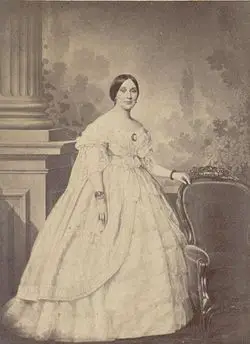Difference between revisions of "How Did Southern Belles Help Dispel Their Own Stereotype"
Costello65 (talk | contribs) (Created page with "{{Mediawiki:Banner1}} thumbnail|250px|Southern Belle in Baltimore depicted on the cover of ''Harper's Weekly'', September 7, 1861. The Antebellum So...") |
(No difference)
|
Revision as of 18:55, 8 July 2016
The Antebellum South was constructed and rationalized from stereotypes. All too familiar are the stereotypes of African-Americans being seen as barbaric, lazy, and ignorant. Equally strong in the South in this period, was the stereotype of the "Southern Belle." The belle was perceived as a woman of culture and refinement. Although this myth was in fact perpetuated by the actions of elite white women, the tenacity and strength displayed by several of these ladies during the Civil War crisis forever changed public perception. Southern women of the elite class worked incredibly hard and toiled long hours with the hope of restoring the South to its antebellum state. Ironically, by doing so they aided in dispelling the myth of the Southern Belle.
Antebellum Women
The life of a plantation mistress was constructed to be one of leisure. Unlike their counterparts in the North, young ladies in the South had no opportunities to earn wages on their own, thus the only means by which to leave the family home was through marriage. Young women in the northern states;however, were entering the work force in factories and the textile mills of Lowell, Massachusetts as early as the 1820’s and were able to enjoy a feeling of independence.[1] In Southern culture, women devoted their time to leisure and the pursuit of culture; labor was for slaves.
The plantation wives held charge over the domestic slaves and often found room to complain about the task of maintaining obedience. In a diary entry from February of 1861, wealthy South Carolinian Ada Bacot grumbled that some of her “young Negroes have been disobeying my orders.” Her journal entry continued to say that she was “mistress and will be obeyed.”[2] The only authority a southern women was able to exert at the time, was over slaves. Less than two years later, Mrs. Bacot would find herself working as a Confederate nurse in Charlottesville, Virginia.
Bacot arrived in Charlottesville on December 12, 1860. She was a strong and vocal secessionist who compared her love for South Carolina to that of “an affectionate daughter for a mother.”[3] She was willing to endure the hardships of a hospital in order to preserve the culture and societal norms of her state. Nursing and other hospital services up until this time were considered to be the domain of men. The Confederate Army Medical Department was created on February 26, 1861 and was overseen by the Confederacy’s first Surgeon General, Dr. Samuel Preston Moore.[4] The hospital attendants consisted of slaves and enlisted men who were deemed unfit for service. As a general rule, men were essentially ignorant as to the methods of caring for the sick and wounded. The medical director in Danville, Virginia described his male nurses as “rough country crackers who have not enough sense to be kind.”[5]Conversely, women were somewhat skilled in caring for the sick as they had done this on the home front prior to the war. In September 1862, the Confederate Congress passed an act allowing hospitals to hire two matrons and two assistant matrons and as many cooks and nurses as needed. Those who were tasked with hiring were instructed to give “preference in all cases to females.”[6]- ↑ Ellen Carol DuBois and Lynn Dumenil, Through Women’s Eyes: An American History (Boston: Bedford/St. Martin’s, 2005), 149.
- ↑ Ada W. Bacot, A Confederate Nurse: The Diary of Ada W. Bacot, 1861-1863, ed. Jean V. Berlin (Columbia: University of South Carolina Press, 1994), 27.
- ↑ Bacot, 25-26.
- ↑ Carol C. Green, Chimborazo: The Confederacy’s Largest Hospital (Knoxville: University of Tennessee Press, 2004), 3.
- ↑ H.H. Cunningham, Doctor’s in Gray: The Confederate Medical Service (Gloucester: Peter Smith, 1970), 72.
- ↑ Green, 44.

